| |
|
|
|
|
|
|
|
|
|
|
|
| |
| |
 |
|
| |
田润德
编译
文/图 2020-06-09 13:36 |
|
| |
|
|
|
|
| |
 |
|
|
|
| |
卡尔·尼尔森(Carl August Nielsen,1865-1931) |
|
|
|
| |
|
|
|
|
| |
尼古拉·齐奈德演奏卡尔`尼尔森《小提琴协奏曲》op.33 |
|
|
|
| |
Carl Nielsen -Violinkoncert -
Nikolaj Znaider - DRSO
- Osmo Vanska |
|
|
|
| |
|
|
|
|
| |
音乐历史上的今天
1865年6月9日,丹麦作曲家卡尔·尼尔森出生在菲英岛上。“蜜蜂的嗡嗡声有菲英岛的口音,当马匹嘶叫,红牛哞哞
,任何人都能听出这与别处大不相同.....钟鸣鸡叫都是菲英方言,每当鸟妈妈给孩子们喂食,所有鸟巢便响起一支欢快的交响曲。”(尼尔森《菲英之歌》)。
卡尔·尼尔森(Carl
August Nielsen)于1865年6月9日生于菲英岛的一个小村子。父亲其实是位画家,但大多数时间是在婚礼或其他节庆场合拉小提琴,而母亲则得照看他们的十二个孩子。为了生计,他们不得不让这些还很小的孩子出去干活。卡尔才六岁的时候已经开始了第一个“正式的工作”——整个炎热的夏天给地主养鹅。
这小男孩感兴趣的是他父亲的表演。他很喜欢在烧火用的长长短短的木柴上敲敲打打演奏出音乐来,有一次他发现他们的橱桌其实是一架用旧的古钢琴时,他被那些竖立在能奏出音乐的琴弦上的一排排小铁锤搞得简直是神魂颠倒。卡尔的爸爸常能给儿子一些音乐礼物,很早就给小孩上起了小提琴课。八岁的时候,小孩就和爸爸一起在婚礼一类的活动中演奏了。卡尔甚至开始了自己作曲,但他爸爸对此没太在意。他说:“你得单独做这些东西,没人能随之舞蹈的”。后来,卡尔学了管乐器,14岁的时候,他成了在Funen最大的城镇欧登塞的军乐队里的号手,在此也学习到有关音乐理论方面的作曲技巧,以莫扎特或海顿的古典作品为作曲基础,开启了创作室内乐作品之路。
人们注意到了这个天才少年,筹集了足够的私人基金送他到哥本哈根,皇家丹麦音乐学院(The Royal Danish Conservatory of
Music)接受了他。
1883年他到哥本哈根音乐学院(今丹麦皇家音乐学院)学习。他的专业是小提琴,其他的专业则在尼尔斯·加德和约翰·彼得·埃米琉斯·哈特曼门下完成。1888年他的初次创作弦乐小组曲
op.1获得成功。1889年他成为哥本哈根皇家剧院小提琴手,并在此接触了大量的弦乐作品及瓦格纳的歌剧作品。 [2]
而他获得了一份奖学金,使得在1890年他可以去到德国深造,研究瓦格纳的作品,并吸收来自欧洲不同国家的文化。
1891年尼尔森在巴黎认识了雕刻家安妮·玛丽·布罗德森(Anne Marie
Brodersen),同年两人结婚。两人白头到老,虽然不无危机。1892年尼尔森写成第一部交响曲,1898年创作Hymnus
Amoris(爱之颂),是为妻子而作的。1902年他的歌剧 扫罗与大卫首演,他亲自指挥。同年完成了第二交响曲《四种性情》。
1903年他偕同妻子去希腊旅游,途中创作了序曲《Helios》(赫利俄斯)。1905年他辞去了小提琴手一职,但1906-14年间一直在皇家剧院担任指挥一职。1906年轻松歌剧《假面舞会》首演,根据路维·郝尔拜的喜剧写成。1912年才首演的第三交响曲Sinfonia
espansiva和他同年创作的小提琴协奏曲使他名扬海外。
一战期间,他写了第四交响曲《不可磨灭》,但同时他个人和事业方面都遇上危机。当雨过天晴之时他写了第五交响曲和康塔塔《Fünen上的春天》,这是丹麦人非常喜爱的一部作品,1922年两部作品首演。同年他和作曲同僚Thorvald
Aagaard,Thomas Laub和Oluf Ring出版歌曲集Folkehøjskolens
Melodibog。同样在1922年他为五位音乐家朋友写了管乐五重奏,他还打算为其中的每一位写一部独奏乐曲。但他只写成了其中两部长笛协奏曲
(1926)和单簧管协奏曲 (1928),其中长笛协奏曲在全世界各大长笛比赛或表演场合中时常被演出。
1925年,他的六十大寿,丹麦举国庆祝。他在外国登台更频繁。他的晚期作品,如两部管乐协奏曲、第六交响曲(1925)和三首钢琴作品 op.59
(1928),音乐语言更现代化。他最后一部大型作品是Commotio (1931),也是他唯一一部大型管风琴作品。
1931年10月3日他因心脏病在哥本哈根逝世
今日视频:1、尼古拉·齐奈德演奏卡尔`尼尔森《小提琴协奏曲》op.33 ;2、
柏巴·斯克莱德演奏卡尔`尼尔森《小提琴协奏曲》。 |
|
|
|
| |
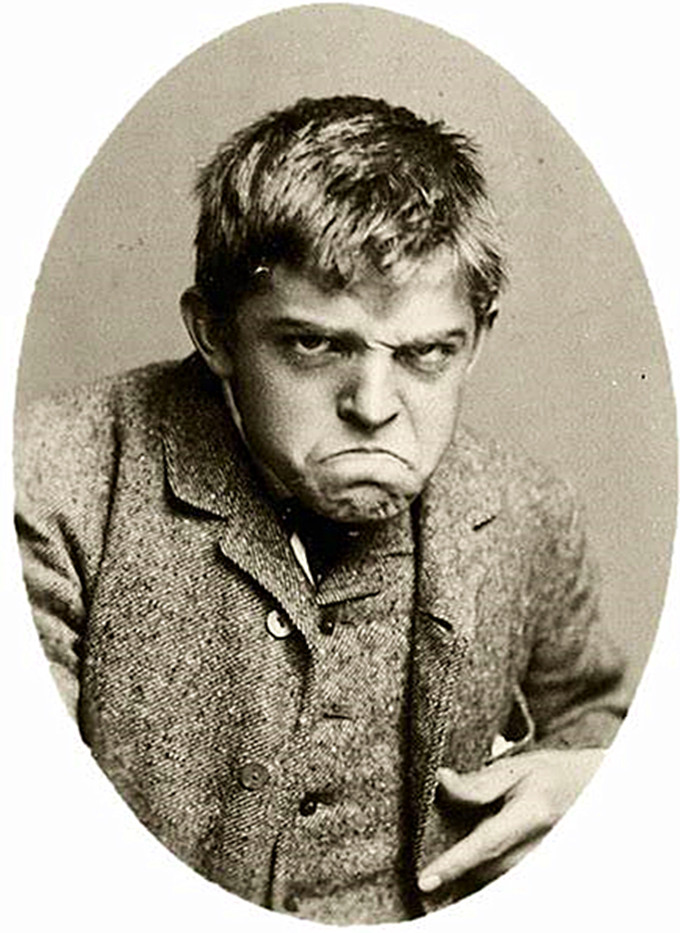 |
|
|
|
| |
年轻的、没有走出菲英岛的卡尔·尼尔森(Carl August Nielsen),永远是那样的调皮。 |
|
|
|
| |
Today in the
history of music
Danish composer Karl Nelson was born on May 8, 1924, on the island of
Faye."The buzzing of the bees has a Fey Island accent, and when the
horses bray and the red bull moos, anyone can tell it's very
different...All the chimes are in The Fei-English dialect, and every
time the mother bird feeds her children, all the nests sing a cheerful
symphony."(Nelson, The Song of Fey).
Carl August Nielsen was born on June 9, 1865, in a small village on the
island of Fiying.His father was actually a painter, but most of the time
he played the violin at weddings and other festive occasions, while his
mother looked after their twelve children.In order to make a living,
they had to send their very young children out to work.By the time he
was six, Carl had started his first "real job" raising geese for a
landlord all summer.
The little boy is interested in his father's performance.He was fond of
making music by tapping on long, short logs for the fire, and when he
discovered that their cupboard table was in fact an old clavichord, he
was quite carried away by the rows and rows of little hammers on the
strings that produced music.Carl's father, who was always able to give
his son musical gifts, started violin lessons early.At the age of eight,
the child played with his father at events such as weddings.Carl even
started composing his own music, but his father didn't care much about
it."You have to do this alone," he said. "No one can dance to it."Carl
later took up wind instruments and, at the age of 14, became a trumpeter
in the marching band of Odense, Funen's largest town, where he also
learned musical theory and composition techniques, building on the
classical works of Mozart or Haydn and opening the way for chamber
music.Noticing The prodigy, people raised enough private funds to send
him to Copenhagen and The Royal Danish Conservatory of Music accepted
him.
In 1883 he went to study at the Copenhagen Conservatory (now the Royal
Danish Conservatory of Music).His major was violin, and the others were
completed by Nils Gard and John Peter Emilius Hartman.In 1888, he made
his first successful composition for string group op.1.In 1889 he became
a violinist at the Royal Copenhagen Theatre, where he was exposed to a
great deal of string music and Wagner's operas.[2] A scholarship allowed
him to go to Germany in 1890 to study Wagner and absorb cultures from
different European countries.
In 1891, Nelson met the sculptor Anne Marie Brodersen in Paris, where
they married the same year.Two people grow old together, although not
without crisis.Nilsson wrote his first symphony in 1892 and the Hymnus
Amoris in 1898 for his wife.He conducted the premiere of his opera Saul
and David in 1902.In the same year, he finished the second Symphony
"Four Temperaments".
He traveled to Greece with his wife in 1903 and wrote the overture
Helios.He resigned as a violinist in 1905, but was conductor at the
Royal Theatre from 1906-14.The lighthearted opera Masquerade was first
performed in 1906, based on a comedy by Lou Holby.The third Symphony,
Sinfonia Espansiva, premiered in 1912, and the violin concerto he
composed in the same year made him famous overseas.
During The First World War, he wrote the Fourth Symphony "Indelible,"
but at the same time he encountered personal and professional
crisis.When the rain came and went he wrote symphony No. 5 and Cantata
Spring on Funen, a favorite of the Danes, which premiered in 1922.In the
same year he and fellow composers Thorvald Aagaard,Thomas Laub and Oluf
Ring published the Folkeh jskolens Melodibog.Also in 1922 he wrote a
wind quintet for five musician friends, and he planned to write a solo
piece for each of them.But he wrote only two of them, the flute Concerto
(1926) and the clarinet Concerto (1928), of which the flute Concerto is
often performed in flute competitions and performances around the world.
His sixtieth birthday was celebrated in Denmark in 1925.He makes more
appearances in foreign countries.His later works, such as the two wind
concertos, the Sixth Symphony (1925) and three piano op.59 (1928), were
more modern in musical language.His last major piece was Commotio
(1931), his only major organ piece.
He died of a heart attack in Copenhagen on October 3, 1931
Video of the day: 1. Nicolae Znaider playing Carl Nelson's Violin
Concerto op.33; 2.Boba Schlede plays Carl Nelson's Violin Concerto. |
|
|
|
| |
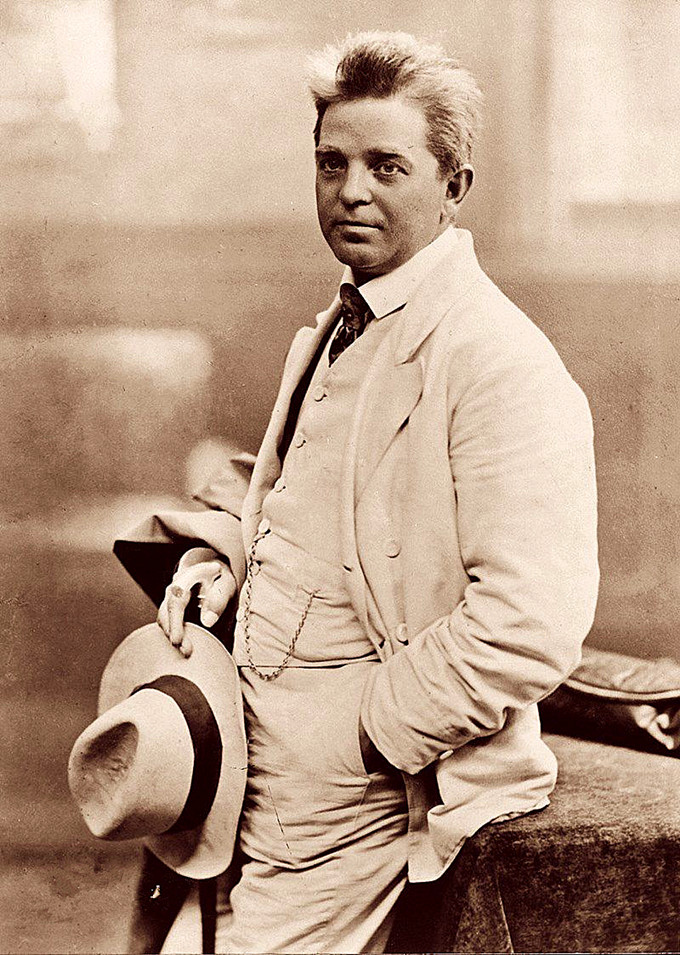 |
|
|
|
| |
卡尔·尼尔森(Carl August Nielsen) |
|
|
|
| |
卡尔·尼尔森的音乐风格具有鲜明的民族特色、强烈的戏剧性,还体现出或辛辣幽默、或深沉多思、或粗犷豪放、或轻松活泼的音乐个性。其代表作是六部交响曲。《第一交响曲》(1890-1892)表现出勃拉姆斯的交响曲风格的影响;《第二交响曲》(亦称《四种气质》交响曲,1901-1902)的四个乐章分别表现古希腊思想家所表述的四种人性:急躁(胆汁质)、恬静(粘液质)、忧郁(抑郁质)和乐观(多血质);
《第三交响曲》(亦称《开阔交响曲》,1910-1911)则以鲜明的民族特色著称,主旨在于描述人性对外在环境的乐观态度;《第四交响曲》
(亦称《不灭交响曲》,1914-1916)虽写于第一次世界大战期间,但仍洋溢着活力,标题意指人类生命力如同永恒般延续;《第五交响曲》(1921-1922)没有标题,只有两个乐章,曲中更有一段指示小鼓可即兴发挥的片段;《第六交响曲》(亦称《纯朴交响曲》,1924-1925)从现代感鲜明的特质又回到了古典与现代均衡的洗练风格;此曲开头使用钟琴演奏重复音,此元素后来亦被肖斯塔科维奇借用在他的第15号交响曲中。 |
|
|
|
| |
Carl
Nelson's music style has distinct national characteristics, strong
drama, but also reflects the spicy humor, or deep thinking, or bold and
bold, or relaxed and lively musical personality.His masterpiece is the
Six Symphonies.The First Symphony (1890-1892) shows the influence of
Brahms's symphony style;The four movements of symphony No. 2 (also known
as The "Four Qualities" symphony,1901-1902) respectively represent the
four kinds of human nature expressed by ancient Greek thinkers:
impatience (choleric), calmness (phlegmatic), melancholy (melancholic)
and optimism (sanguine).The Third Symphony (also known as the "Open
Symphony",1910-1911), with its distinctive national characteristics,
aims to describe human nature's optimistic attitude towards the external
environment.The Fourth Symphony (also known as the Immortal Symphony,
1914-1916) was written during The First World War, but it is still full
of vitality.The Fifth Symphony (1921-1922) has no title but only two
movements, and there is also a segment indicating that the small drum
can be improvised.Symphony No. 6 (also known as The Simple Symphony,
1924-1925) returns to the classical and modern balanced style of washing
and practicing from the distinctive modern characteristics.The beginning
of the piece USES the glockenschaft to play the repetition, an element
later borrowed by Shostakovich in his Symphony No. 15. |
|
|
|
| |
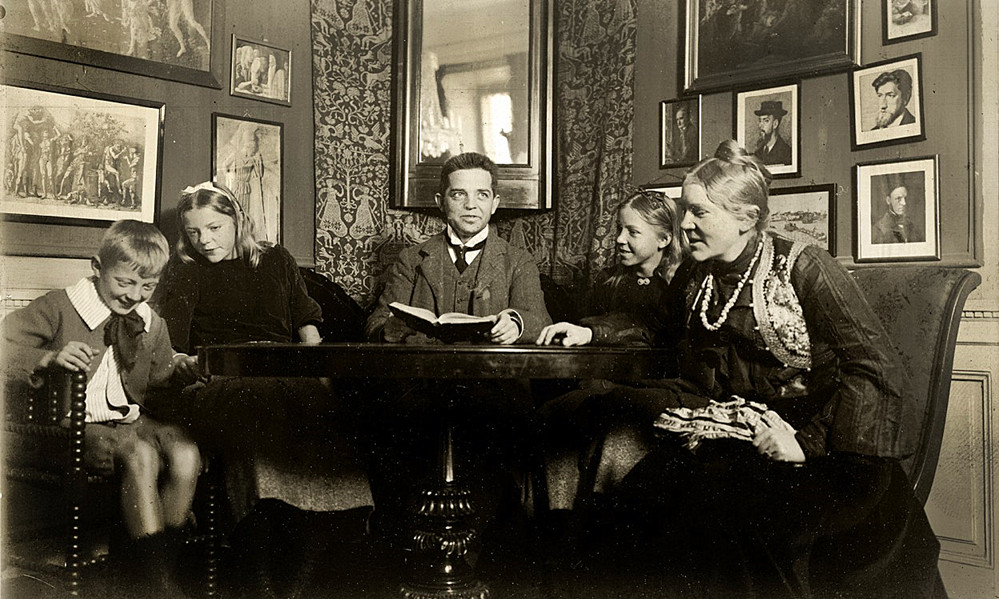 |
|
| |
卡尔·尼尔森(Carl August Nielsen)和家人在一起 |
|
| |
Carl
August Nielsen is with his family |
|
| |
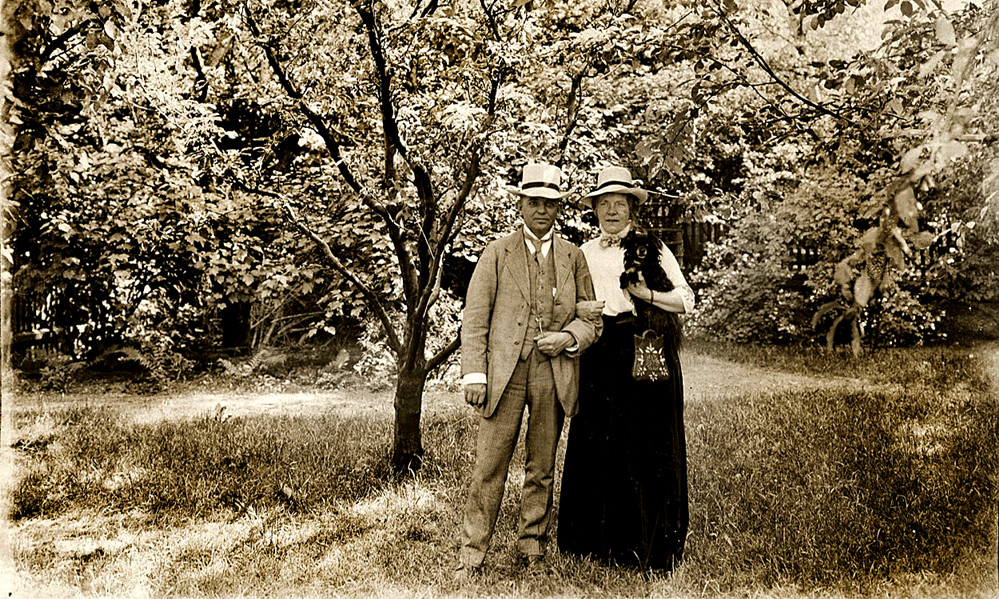 |
|
| |
卡尔·尼尔森(Carl August Nielsen)
和夫人在一起
|
|
|
|
| |
|
|
|
|
| |
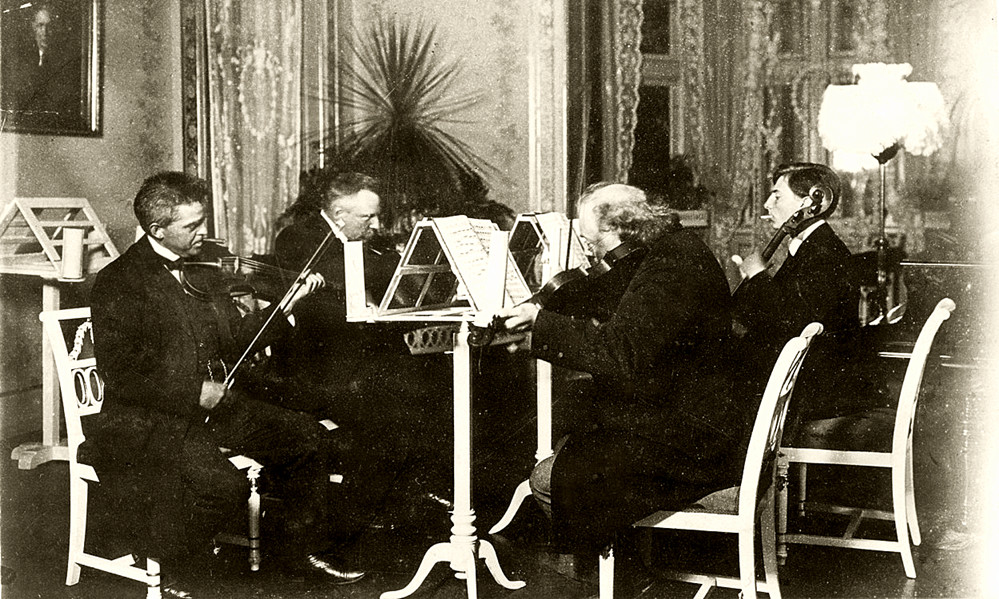 |
|
| |
卡尔·尼尔森(Carl August Nielsen)是一个热衷室内乐的小提琴家,他们在排练四重奏。 |
|
|
|
| |
|
|
|
|
| |
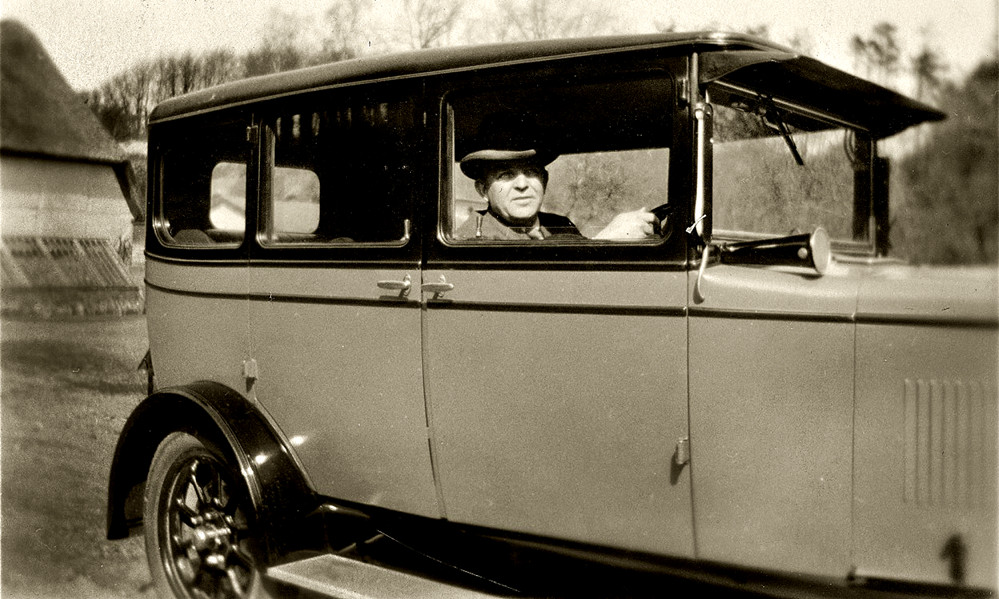 |
|
| |
卡尔·尼尔森(Carl August Nielsen)和自己的爱车 |
|
|
|
| |
|
|
|
|
| |
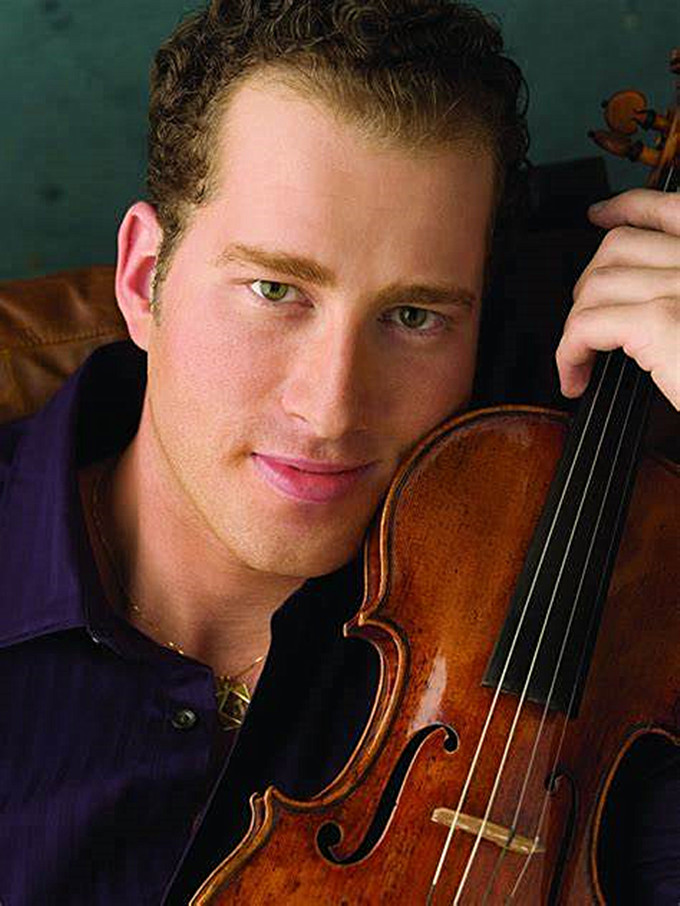 |
|
|
|
| |
尼古拉·齐奈德(Nikolaj
Znaider) |
|
|
|
| |
齐奈德出生在丹麦,父母是以色列人。1992年,他在卡尔·尼尔森国际音乐比赛中获得一等奖,这是他第一次获得认可。五年后,他在布鲁塞尔举行的更为知名的伊丽莎白女王比赛(Queen
Elisabeth
Competition)中夺冠,从而赢得了这次胜利。在取得成功之后,他在茱莉亚音乐学院与著名的教育家多萝西·迪莱(Dorothy
DeLay)进行了进一步的学习,之后他开始与世界各地的大型管弦乐团合作演出,他的职业生涯很快就开始了。
后来,他开始指挥。“我之所以会指挥是因为我会拉小提琴,因为我热爱音乐,”他说。“我开始演奏小提琴,并把它提升到一个更高的水平,但很早就意识到我想要指挥。关键是要找到机会、时间和开始的机会。”
当齐奈德在这两方面都做得更多时,他发现他的指挥为他的小提琴演奏提供了养分。他说:“我音乐才能的深度,我能带给贝多芬小提琴协奏曲的东西,只会在我作为指挥全身心投入的交响乐中得到增强和充实。”“这绝对是一件步调一致的事情。”
在这些场合,齐奈德用小提琴指挥,几乎总是在演奏莫扎特的小提琴协奏曲或贝多芬的协奏曲时,这些古典时期的作品通常需要较小的力量。在巴洛克风格的世界里,小提琴家兼指挥的双重角色最常见,还有像安德鲁·曼兹这样的著名表演者。Znaider说:“军队规模更小,参与的人也更少,所以它真的没有成为一个实际问题。”没有多少声音,背对着乐队,小提琴手的声音也不会被淹没。这完全是两码事。”
他最近与伦敦交响乐团一起录制了莫扎特的五首小提琴协奏曲。第4-5号协奏曲的专辑定于3月发行。2006年,齐奈德作为小提琴手首次在LSO乐队演出,5年后,他的指挥首演开始了。他与LSO关系密切,部分原因是他与科林•戴维斯(Colin
Davis)的关系。戴维斯在1995年至2006年担任乐团首席指挥,后来成为乐团主席。
“它变成了一种瞬间的化学爆发,”他谈到他们的第一次合作时说。“然后,我们一起玩了很多,巡演,录音。在他生命的最后七八年里,无论他走到哪里,我都跟着他。这是一种非常特殊的关系。戴维斯本应指挥莫扎特协奏曲项目,在他2013年去世后,齐奈德和LSO决定继续这个项目,以表达对戴维斯的敬意。
自2011年以来,齐奈德一直担任俄罗斯圣彼得堡著名的马林斯基管弦乐团的首席客座指挥,这个职位使他能够指挥交响音乐会和歌剧演出。他希望有一天能在某个地方当上第一个音乐总监。“当然,当正确的事情来的时候,”他说。“当然,下一步是组建一个乐团,我可以和他们有更深的联系,扮演一个更常规的角色。” |
|
|
|
| |
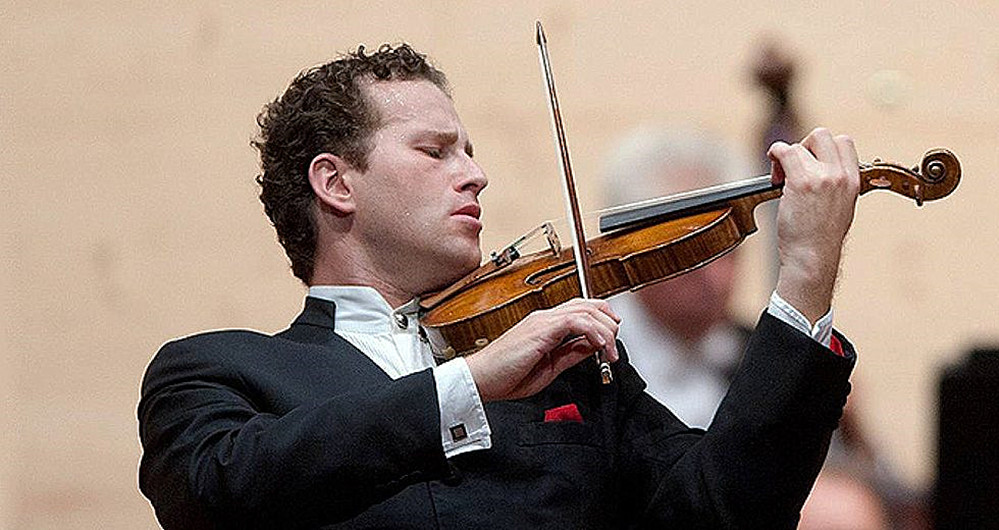 |
|
| |
尼古拉·齐奈德(Nikolaj
Znaider) |
|
|
|
| |
Born in
Denmark to Israeli parents, Znaider first gained recognition in
1992, when he won first prize at the Carl Nielsen International
Music Competition 1992. He topped that victory five years later
by winning the better-known Queen Elisabeth Competition in
Brussels. As he followed up those successes with further study
with famed pedagogue Dorothy DeLay at the Juilliard School, he
began performing with major orchestras worldwide and his
professional career was quickly launched.
Later, he began to conduct. “I conduct for the reason I play
the violin, because I love music,” he said. “My path happened to
be that I started playing the violin and I ended up taking it to
a high level maybe, but quite early on, I realized that I wanted
to conduct. It was a matter of finding the chance, the time and
the opportunity to start.”
As he done more of both, Znaider has discovered that his
conducting feeds his violin performance. “The depth of my
musicianship, what I can bring to the Beethoven Violin Concerto,
is only enhanced and enriched by the symphonies that I occupy
myself with as a conductor,” he said. “It’s something that goes
absolutely in tandem.”
On those occasions when Znaider conducts from the violin, it’s
almost always while playing the Mozart violin concertos or the
Beethoven Concerto, Classical-era works that typically call for
smaller forces. The dual role of violinist-conductor is most
often seen is in the Baroque world with noted performers like
Andrew Manze. “The forces are smaller, and there are simply
fewer people involved, so it really doesn’t really become a
practical issue,” Znaider said. “There isn’t that much sound,
and the violinist isn’t drowned out having his back turned to
the orchestra. It’s a much different thing.”
He recently recorded all five of Mozart’s violin concertos with
the London Symphony Orchestra. An album of Concertos Nos. 4-5 is
scheduled for release in March. Znaider made his debut as a
violinist with the LSO in 2006, and his conducting premiere came
five years later. His close connection to the LSO developed in
part because of his ties to Colin Davis, the orchestra’s
principal conductor from 1995 through 2006 and later its
president.
“It became a kind of instant chemical eruption,” he said of
their first collaborations. “Then, we played an awful lot
together, tours and recordings. Everywhere he went, I went with
him for the last seven or eight years of his life. It became a
very special relationship.” Davis was to have conducted the
Mozart concerto project, and after he died 2013, Znaider and the
LSO decided to proceed with the project as an homage to Davis.
Since 2011, Znaider has served as principal guest conductor of
the celebrated Mariinsky Orchestra in St. Petersburg, Russia, a
position that has allowed him to conduct both symphonic concerts
and operatic productions. Someday, he hopes to have his first
music directorship somewhere. “Absolutely, when the right thing
comes,” he said. “The next logical step is, of course, to have
an orchestra with whom I can have a deeper connection and a more
regular role.” |
|
|
|
| |
|
|
|
|
| |
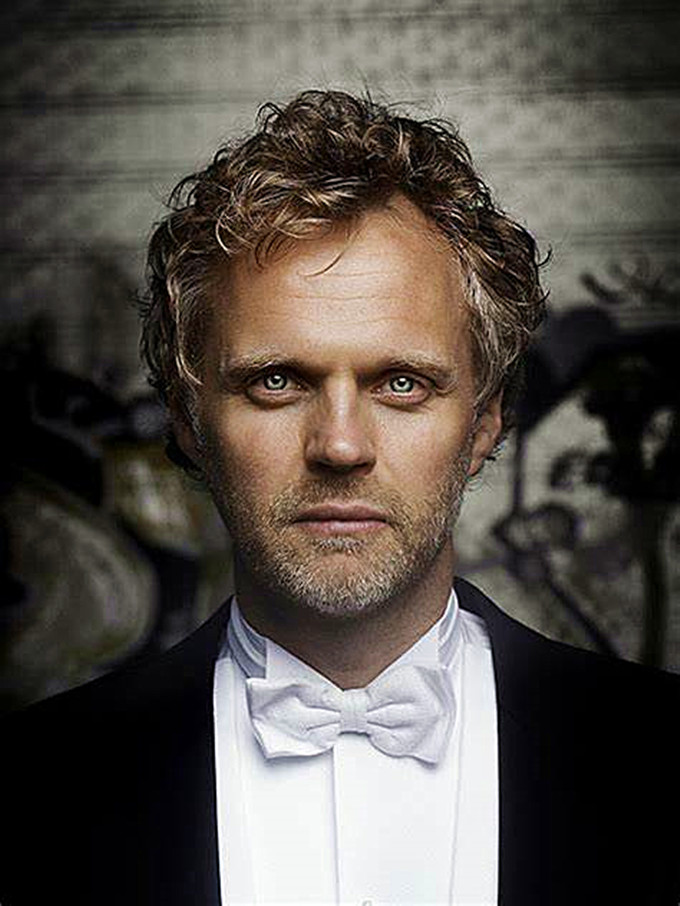 |
|
|
|
| |
托马斯·索德加德(Thomas Sondergard) |
|
|
|
| |
索德加德的海顿确实是“大乐队”海顿,在指挥第99号交响曲中取得了很强的弹性效果。他们非常注意清晰的蚀刻弦线对位,并在正确的位置放置戏剧性的重音。唯一的困难在于,正如托马斯•比查姆爵士(Sir
Thomas
Beecham)之前的许多作品所展示的那样,这是这位作曲家最迷人、最亲切的交响曲之一。琴弦的魅力在于宜人的风,在与琴弦的微妙互动中总有话要说。但在这里的前两个动作中却不是这样:索德加德根本没能从他们身上激发出多少火花或独创性。小步舞曲继续这种有点严厉的方式,无忧无虑的天真无假的三重唱很少,而结局是不可否认的令人兴奋的所有口音和强大的推力。我毫不怀疑,这种方式确实捕捉到了这位作曲家性格中一些刚强的活泼和粗暴,有时让我想起罗伊•古德曼(Roy
Goodman)或西蒙•拉特尔爵士(Sir Simon
Rattle)。但总的来说,对于这部作品来说,它似乎太过沉重,太过引人注目地轻描淡写了。
如果托马斯·索德加德的《海顿》听起来有点像贝多芬,那么他接下来的《贝多芬第二交响曲》听起来可能更像作曲家的《第七交响曲》,自始至终都有强烈的力度和戏剧感,而缓慢的乐章实际上模仿了后者丰富的弦乐造型。我的反应和上面非常相似:这部年轻的作品中所有的智慧和玩乐都到哪里去了?第一乐章有点厚颜无耻,但它确实引入了一个我以前从未听说过的创新。在一开始的琴弦与圆号之间的反复交替中,指挥家在将圆号的音符先设为弱音后设为非弱音之间交替进行,一遍又一遍地进行。我不知道这是怎么回事。在最后两个动作中,纯粹的力量占据了上风,几乎所有的动作都是有力而费力的。我不确定这种力度是否真的是有意为之:有时,由于合奏并不完美,乐团和指挥似乎并不总是完全一致。然而,结局有效地寻找了同样的白热和火山的重量在第七结局中发现(回忆卡洛斯·克莱伯)。不幸的是,我发现这只是响亮的,痛苦的坚持不懈,执着的强调定音鼓。当索德加德讲到贝多芬的第七交响曲时,他是如何演奏的,这将是很有趣的。 |
|
|
|
| |
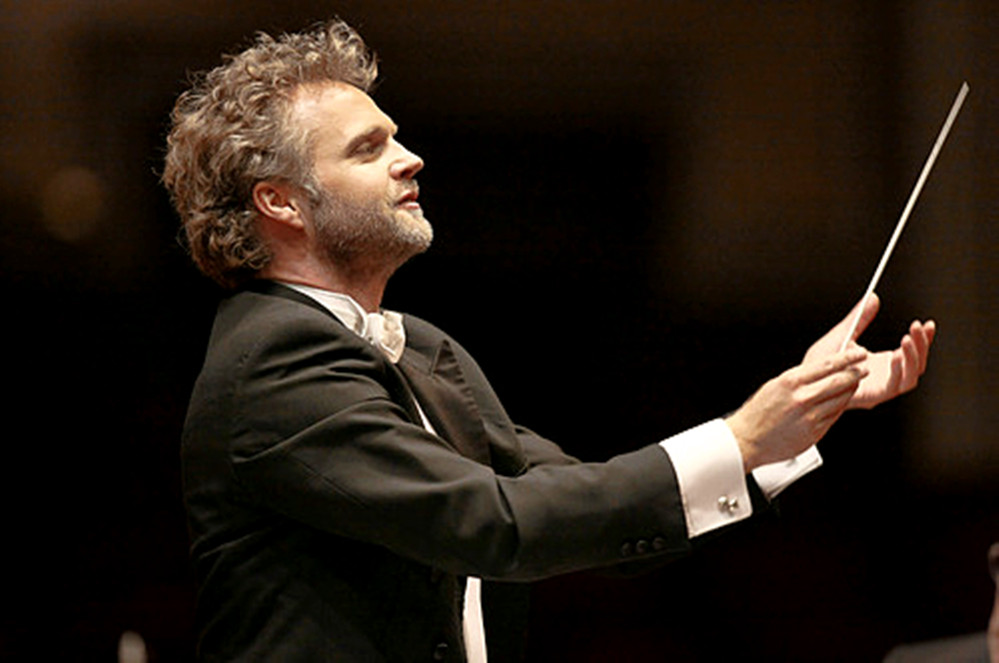 |
|
| |
托马斯·索德加德(Thomas Sondergard) |
|
|
|
| |
Sondergaard’s
Haydn is indeed ‘big-band’ Haydn, and the conductor achieved a
strongly-resilient outcome in Symphony No. 99. Great attention was paid
to articulating the sharply-etched string counterpoint, and to placing
dramatic accents in the right places. The only difficulty is this is one
of the composer’s most charming and genial symphonies, as many from Sir
Thomas Beecham forward have shown. The key to the charm is the
delightful winds, which always have something to say in their subtle
interaction with the strings. But not in the first two movements here:
Sondergaard simply failed to coax much sparkle or ingenuity from them at
all. The Minuet carried on this somewhat severe approach, the carefree
innocence of the Trio going for little, while the Finale was undeniably
exciting with all its accents and powerful thrust. I have no doubt that
this approach did capture some of the robust buoyancy and truculence in
the composer’s make-up, at times reminding me a little of Roy Goodman or
Sir Simon Rattle. Overall though, it seemed too heavy and conspicuously
light on wit for this work in particular.
If Sondergaard’s Haydn might have sounded a bit like Beethoven, then his
following Beethoven Second Symphony perhaps sounded more like the
composer’s Seventh, with strong weight and drama throughout and a slow
movement that actually mimicked the rich string shaping of the latter’s.
My reactions were very similar to above: What happened to all the wit
and play in this fresh youthful work? The first movement turned out sort
of brazen and brash, but it did introduce one innovation that I had not
heard before. In the opening repeated interchanges between the strings
and horns, the conductor alternated between having the horn notes first
muted and then non-muted, over and over again. I have no idea what this
was about. It was in the final two movements that sheer force took over,
virtually everything emphatic and laboured. I was not sure if this
degree of force was really intended: sometimes it looked like the
orchestra and the conductor were not always in complete agreement, since
ensemble was not perfect. Nevertheless, the finale effectively sought
the same white heat and volcanic weight that one finds in the finale of
the Seventh (recall Carlos Kleiber). Unfortunately, I found this just
loud and painfully unremitting, with obsessively-emphatic timpani. It
will be interesting to hear how Sondergaard actually does Beethoven’s
Seventh when he gets to it. |
|
|
|
| |
|
|
|
|
| |
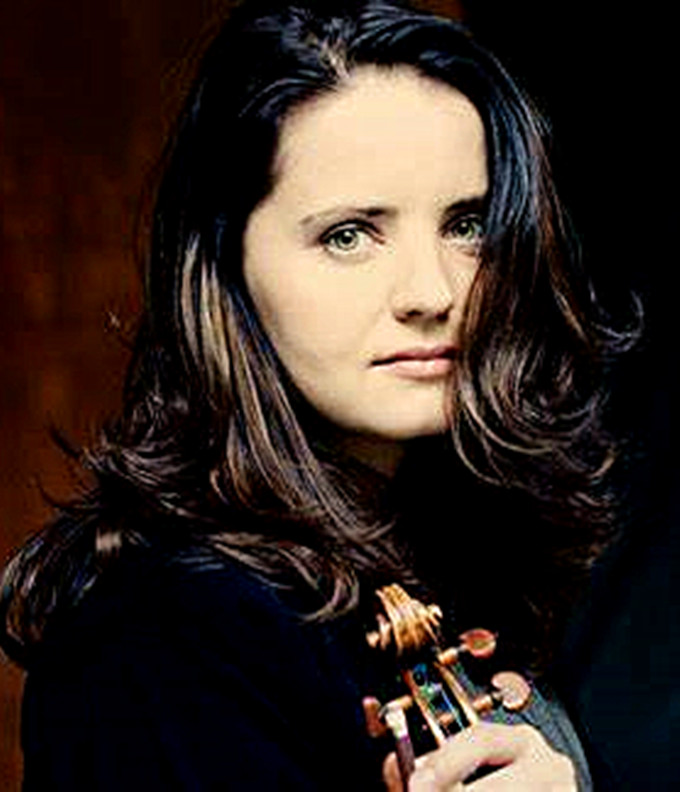 |
|
|
|
| |
柏巴·斯克莱德(Baiba Skride) |
|
|
|
| |
小提琴家要想为录制唱片音乐再添一份贡献,就必须非常出色、非常勇敢,而且要有一些令人信服的、有个性的东西要说。年轻的拉脱维亚小提琴家柏巴·斯克莱德(Baiba
Skride)拥有所有这些品质。出生于1981年的她是2001年伊丽莎白皇后比赛的第一名,作为独奏者和室内音乐家,她开始了一项重要的国际事业;这是她为索尼古典音乐录制的第三张唱片。她将自己不费力气的技巧完全用在音乐服务上,而不是用来展示,她的音色美得惊人:富于表现力、变化多端、温暖而纯净。她对肖斯塔科维奇的描写完全是她自己的风格:不同寻常的内敛、抒情、豪放。她对每一种情绪的专注和认同都是非凡的。缓慢的移动是悲哀的、凄凉的、绝望的;小心翼翼的步伐,无情的积累又陷入绝望的无奈之中。快速的动作是辉煌的,但制和清晰,节奏从不过度;高潮是放肆的,但不刺耳。 |
|
|
|
| |
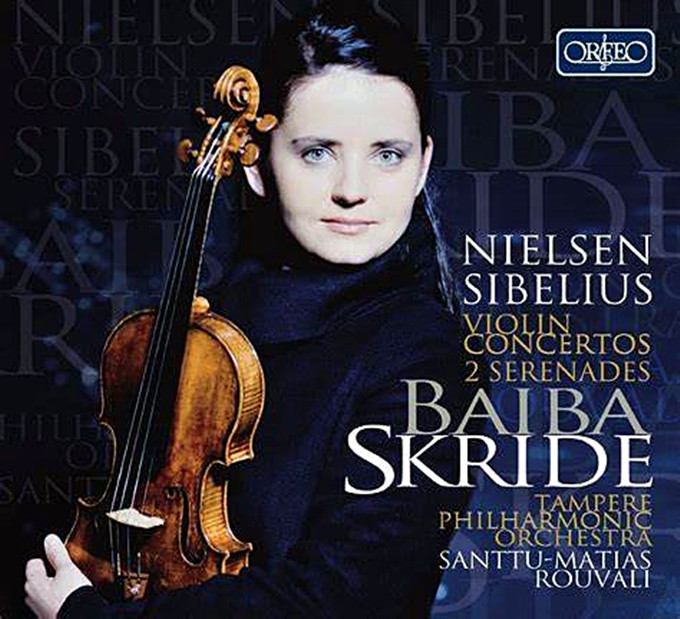 |
|
|
|
| |
柏巴·斯克莱德(Baiba
Skride)录制的尼尔森和西贝柳斯小提琴协奏曲的唱片封面 |
|
|
|
| |
To
contribute yet another addition to the discography, a violinist
would have to be very good, very courageous, and have something
compelling and personal to say. The young Latvian violinist
Baiba Skride possesses all these qualities in abundance. Born in
1981, first prize winner of the 2001 Queen Elisabeth
Competition, she is embarked on a major international career as
soloist and chamber musician; this is her third recording for
Sony Classical. She uses her effortless virtuosity entirely in
the service of the music, never for display, and her tone is
strikingly beautiful: expressive, variable, warm and pure in
every register. Her approach to the Shostakovich is very much
her own: unusually inward, lyrical, and expansive. Her emotional
concentration and identification with every mood are
extraordinary. The slow movements are mournful, bleak, and
desperate; carefully paced, inexorable build-ups sink back into
forlorn resignation. The fast movements are brilliant but
controlled and clear, the tempi never excessive; the climaxes
are unbridled but not raucous.
|
|
|
|
| |
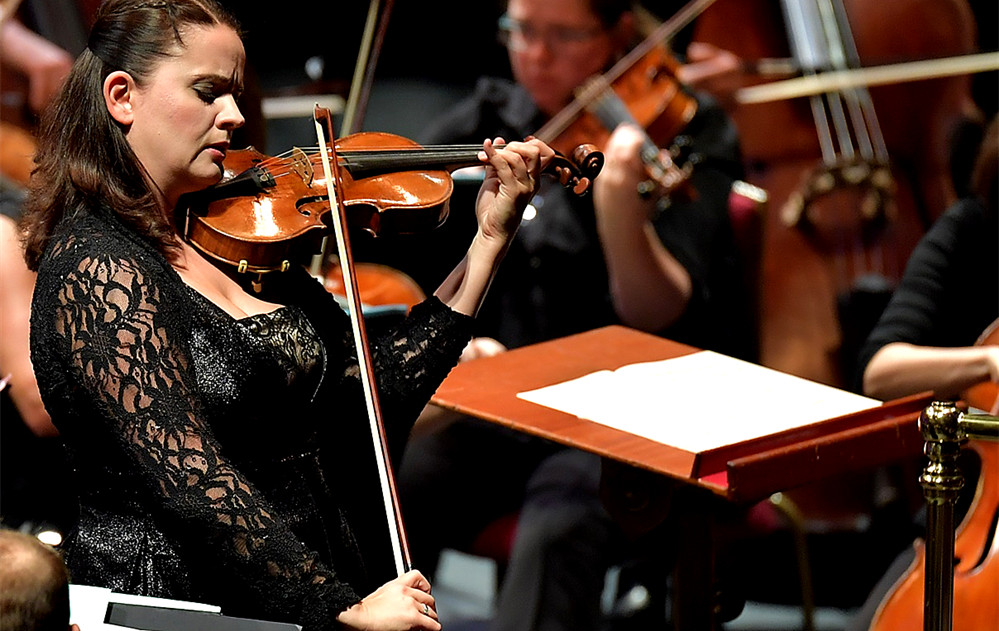 |
|
| |
乔纳森·诺特(Jonathan
nott) |
|
|
|
| |
诺特是一位极为热心的当代音乐倡导者,曾指挥首演芬尼修、里姆和拉欣曼的许多新作。2000年8月他成为布莱兹于1976年创建的著名的当代演奏团的首席指挥,2004年改任该团首席客座指挥。
从上世纪90年代中叶起,诺特开始作为客座指挥与许多知名乐团合作,包括柏林爱乐乐团,他指挥该团为华纳唱片公司录制了捷尔吉·利盖蒂的全部乐队作品,其中包括《安魂曲》,备受赞誉。
诺特于2005-2006音乐季的重要演出包括与纽约和洛杉矶爱乐乐团的首次合作,两个乐团均邀请他于2006-2007音乐季再度合作。2006年2月他首次指挥BBC交响乐团,同年12月回到伦敦与爱乐乐团合作演出。 |
|
|
|
| |
|
|
|
|
| |
|
|
|
|
| |
柏巴·斯克莱德演奏卡尔`尼尔森:小提琴协奏曲,op.33
|
|
|
|
| |
Baiba Skride,
Carl
Nielsen:ViolinKoncert,op.33 |
|
|
|
| |
卡尔`尼尔森:小提琴协奏曲,op.33
独奏家:白巴·斯克莱德
DR Symfoni管弦乐团
指挥:托马斯·索德加德
|
|
|
|
| |
Carl Nielsen:ViolinKoncert,op.33
Solist: Baiba Skride
DR SymfoniOrkestret
Dirigent:Thomas Sondergard
|
|
|
|
| |
|
|
|
|
| |
未得原作者编者授权严禁转载www.mt77.com任何内容 |
|
|
|
|
|
|
|
|
|
|
|
|
|
|


